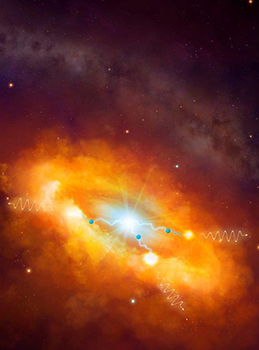Latest News Archive
Please select Category, Year, and then Month to display items
26 January 2019
|
Story Lacea Loader
![]()
The executive management of the University of the Free State (UFS) has noted with concern the disconcerting effects of the current political and economic crisis and instability in Zimbabwe – specifically with regard to the effect it has on its students from Zimbabwe.
“As part of a coordinated support effort driven by the UFS Office for International Affairs we have invited Zimbabwean students to communicate their individual challenges regarding finance, travel, and special examinations to us.
We have received various reports about problems with delayed visas and have appealed to the Department of Home Affairs to consider concessions for our affected Zimbabwean students,” says Mr Cornelius Hagenmeier, Director of the university’s Office for International Affairs.
Arrangements are being made on a case-by-case basis for students who were unable to register before the closing date. Students who have reported travel challenges are also being contacted individually to consider possible support.
“As an institution committed to the furtherance of social justice – not only on our campuses, but also in the wider Southern African region – the UFS wants to encourage our affected students not to abandon their all-important education plans in the light of the turmoil and obstacles they are currently facing. As a university community, our heartfelt sympathy goes to our Zimbabwean students and their families during these trying times,” says Prof Francis Petersen, UFS Rector and Vice-Chancellor.
Released by:
Lacea Loader (Director: Communication and Marketing)
Telephone: +27 51 401 2584 | +27 83 645 2454
Email: news@ufs.ac.za | loaderl@ufs.ac.za
Fax: +27 51 444 6393
Two scientists part of team that discovers the source of the highest energy cosmic rays at the centre of the Milky Way
2016-03-22

Artist's impression of the giant molecular clouds surrounding the Galactic Centre, bombarded by very high energy protons accelerated in the vicinity of the central black hole and subsequently shining in gamma rays.
Artist's impression: © Dr Mark A. Garlick/ H.E.S.S. Collaboration Spotlight photo:
Dr Brian van Soelen and Prof Pieter Meintjes of the UFS Department of Physics.
Photo: Charl Devenish
|
H.E.S.S. (High Energy Stereoscopic System) scientists publically revealed their latest galactic discovery in the international science journal, Nature, on 16 March 2016. These scientists were able to pinpoint the most powerful source of cosmic radiation – which, up to now, remained a mystery.
Part of this team of scientists are Prof Pieter Meintjes and Dr Brian van Soelen, both in the University of the Free State (UFS) Department of Physics. Dr Van Soelen explains that they have discovered a proton PeVatron – a source that can accelerate protons up to energies of ~1 PeV (10^15 eV) – at the centre of the Milky Way. The supermassive black hole called Sagittarius A has been identified as the most plausible source of this unprecedented acceleration of protons.
The protons are accelerated to Very High Energy (VHE) gamma rays. The energy of these protons are 100 times larger than those achieved by the Large Hadron Collider at CERN (the European Organization for Nuclear Research).
According to Dr Van Soelen, the fact that this research has been published in Nature demonstrates the importance and pioneering nature of the research conducted by H.E.S.S. The H.E.S.S. observatory – operational in Namibia – is a collaboration between 42 scientific institutions in 12 countries.
In 2006, H.E.S.S. was awarded the Descartes Prize of the European Commission – the highest recognition for collaborative research – and in 2010 the prestigious Rossi Prize of the American Astronomical Society. The extent of the observatory’s significance places it among the ranks of the Hubble Space Telescope and the telescopes of the European Southern Observatory in Chile.
“The next generation VHE gamma-ray telescope,” Dr Van Soelen says, “will be the Cherenkov Telescope Array (CTA), which is currently in the design and development stage.” Both Dr Van Soelen and Prof Meintjes are part of this project as well.
H.E.S.S. has issued a complete statement about the paper published in Nature.